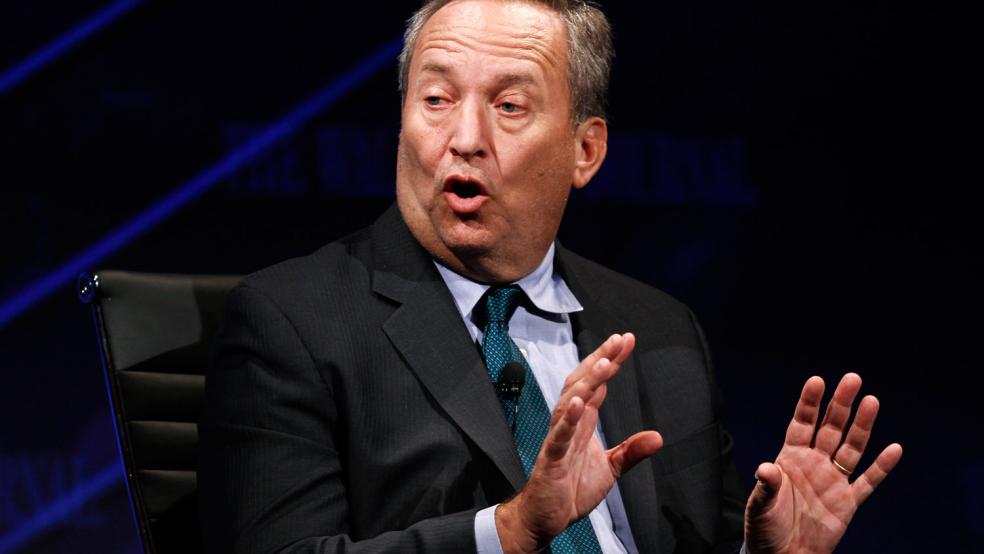After missing his chance to lead the Fed, Larry Summers was free to speak his mind – or in Summers’ case, to continue doing so – in a way that a central bank chief never can. At the International Monetary Fund Economic Forum earlier this month, the former Clinton administration Treasury Secretary and Obama administration adviser took full advantage, delivering a speech that is still causing a buzz in the economic community.
Summers made the case that the economy, even before the financial crisis, had reached a level of stagnation such that, even in the midst of bubbles, the job market and overall growth were only decent.
“Suppose,” Summers said, “that the short term real interest rate that was consistent with full employment had fallen to negative 2 percent or negative 3 percent sometime in the middle of the last decade.”
Related: Yellen Shows She's Ready to Lead the Fed
Pause for a moment to consider what Summers – by anyone’s account one of the most talented economists of his generation – is suggesting here. He saying we may well be in a situation where the rock bottom interest rates of today still may still not be low enough, and that to generate sufficient demand to bring the economy to full employment – defined as between 3 percent and 4 percent unemployment – banks, instead of paying interest on savings, would essentially charge account holders for keeping their money for them.
A man of Summers’ stature and experience obviously isn’t seriously suggesting that the Fed deal in imaginary numbers in setting monetary policy. Rather he is making a grim point about the prospects for the U.S. economy in a world where policymakers are dead set on cutting spending and the Fed has few levers left to pull.
“Four years ago, the financial panic had been arrested. The TARP money had been paid back, credit spreads had substantially normalized. There was no panic in the air four years ago,” Summers said. “But in those four years, the share of adults who are working has not increased at all. GDP has fallen further behind potential as we would have defined it in the fall of 2009.”
Typical economic analysis, Summers said, would have predicted a surge in growth following the slump caused by the financial crisis.
“You’d expect that once things normalized, you’d get more GDP than you originally had. Not that four years later you’d still be having substantially less than you had before. There’s something odd about financial normalization…and then continued slow growth. So what’s an explanation that would fit both of these observations?"
The answer, according to Summers, is that natural growth in the U.S. economy has slowed to the point where it is, for all practical purposes, impossible to restore it through conventional monetary policy. Add that to the planned phase-out of quantitative easing and a Congress that is interested in cutting spending rather than providing further stimulus, and the prognosis is not a good one.
Then, just to make sure nobody left the room happy, Summer added this kicker:
If he’s right about interest rates, he said, “Then, conventional macroeconomic thinking leaves us in a very serious problem, because we all seem to agree that, whereas you can keep the federal funds rate at a low level forever, it’s much harder to do extraordinary measures beyond that forever. But the underlying problem may be there forever.”
So getting rid of the QE program? Continuing to cut spending and focus on deficit reduction? Not the best ideas right now, according to Summers.
“It does seem to me that four years after the successful combating of the crisis, and there’s really no evidence of growth that is restoring equilibrium, one has to be concerned about a policy agenda that is doing less with monetary policy than has been done before, doing less with fiscal policy than has been done before, and taking steps whose basic purpose is to cause there to be less lending, borrowing and inflated asset prices than there was before.”
Imagine how that would have gone over in a Senate confirmation hearing.
Top Reads from The Fiscal Times:





